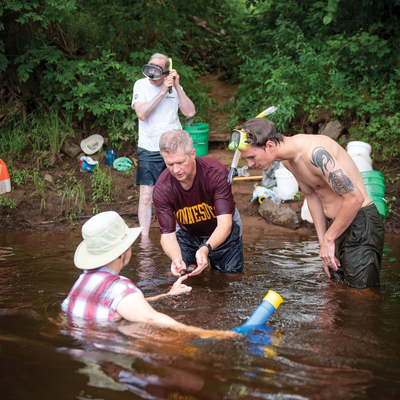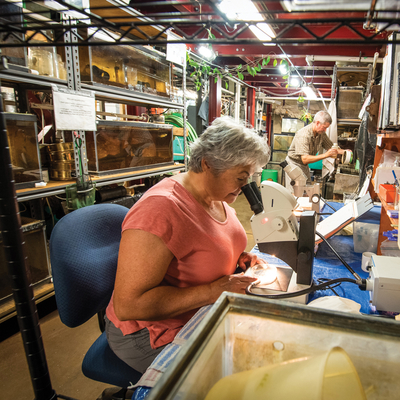Susan Binkley, like many of us, likes to see the bottom of the lake when she’s swimming. The Extension Master Naturalist volunteer recently snorkeled in the St. Croix River with a University of Minnesota researcher to find the Wabash Pigtoe. It’s one of many native mussels that help keep your swimming water nice and clear.
“The water filtering behavior of native mussels lowers particle loads in water, which also helps reduce costs at water treatment plants,” says Amy Rager, director of the University of Minnesota Extension Master Naturalist volunteer program. “Mussels are also food to a variety of animals and play other important roles in our ecosystem.”
“If you aren’t paying attention, mussels on the river bed look like plain rocks. Inside a mussel shell is where all the beauty lies; iridescent lavender, pink, silver or jade nacre,” says Binkley. She and other Master Naturalists are assisting with research on the Wabash Pigtoe. Extension trains these citizen scientists to do this type of real-world fieldwork.
Mussels are food to a variety of animals and play other important roles in our ecosystem.
“Most native Minnesota mussels must attach to certain fish species in order to metamorphose from larvae to juveniles,” says Mark Hove, the University of Minnesota researcher who leads the Minnesota Native Mussel Project. “We are trying to identify which fish this mussel needs to develop into the next stage in its life cycle.”
Volunteers work in lab
Back at the lab, the volunteers placed Wabash Pigtoe larvae with three fish species to see if they would attach to them, and they did. In July, they continued volunteering to help Hove discover which other fish species may be hosts.
“Everything Mark Hove has had us doing for him is really kind of complicated,” says Binkley. “The biology itself is complicated. The lab work was tricky. The field work was challenging. But when you try your hand at something a couple of levels above your expertise, you come out more proficient than ever at your present level.”
“Master Naturalists are helping conserve a species that is a member of one of the most diverse and threatened groups of organisms in the United States,” says Hove.
They plan to publish their findings with the Freshwater Mollusk Conservation Society for use by state and federal natural resource biologists.
The natural facts
- 1,704 Master Naturalists volunteer at over 150 organizations.
- Certification requires 40 hours of training on Minnesota’s unique ecological areas, called biomes.
- They perform at least 40 hours of service each year, totaling more than 85,000 hours last year.
These Minnesotans make a difference by volunteering for nonprofits, state agencies, nature centers and University research programs. They also bring their new knowledge to their jobs and communities.
Visit the Master Naturalist volunteer page for more information.
Meet the Master Naturalists
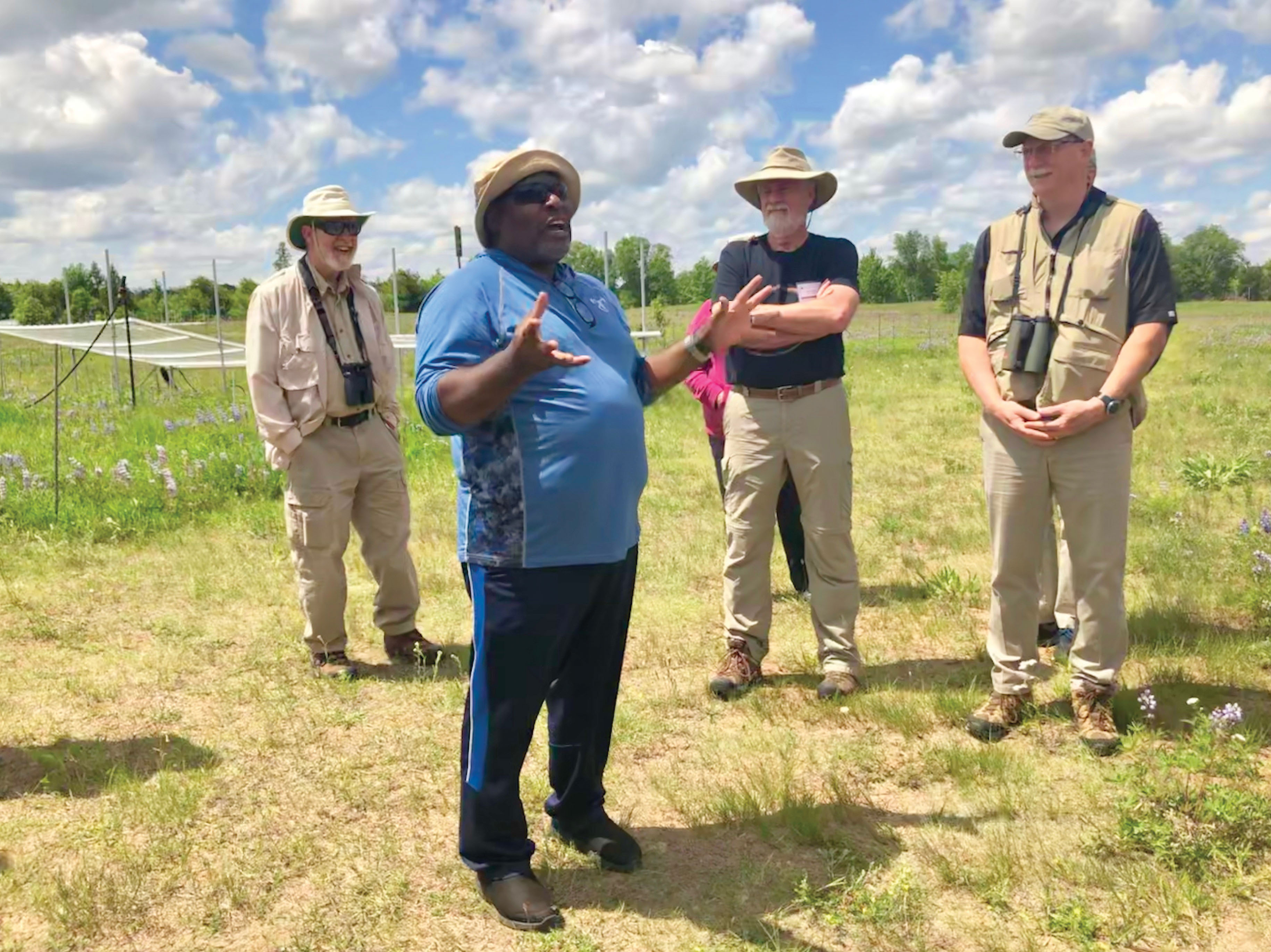
DC Randle
A retired St. Francis High School science teacher, Randle volunteers at Cedar Creek Ecosystem Science Reserve. “People learn science best from first-hand experiences,” he says.
Cedar Creek is an ecological research site owned and run by the University of Minnesota and the Minnesota Academy of Science. It lies at the boundary between prairie and forest and sits at an ecological triple point, where North America’s three major biomes exist on top of one another.
“Master Naturalists collect data on bumblebees, red-headed woodpeckers and our other wildlife, and they run our monthly ecology book club,” says Caitlin Potter, education and community engagement coordinator. “They make an enormous difference here, where projects are many and staff are few.”
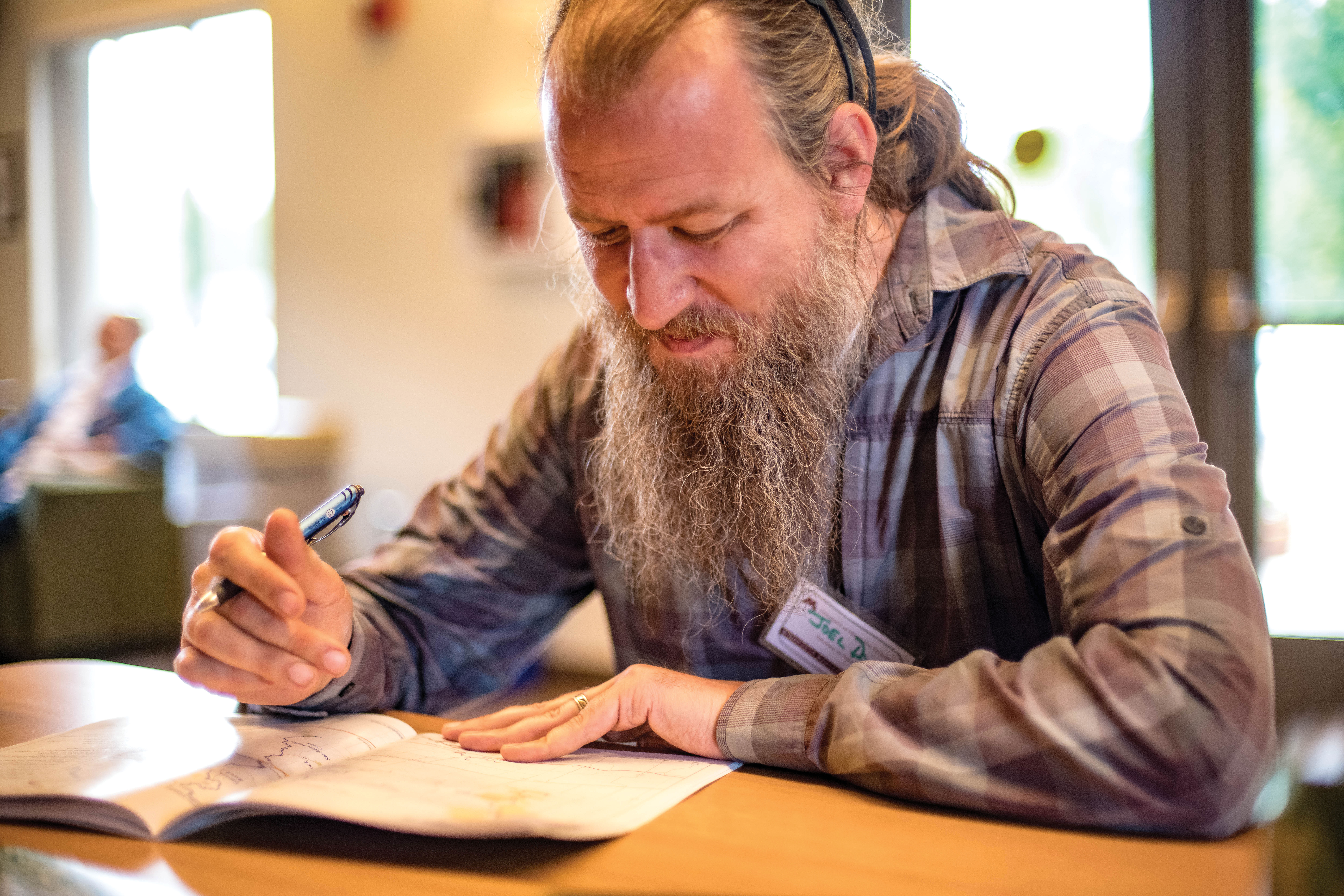
Joel Donna
Donna grew up in Jordan, Minn., where he credits his years in Extension’s 4-H program for inspiring his call to service. The assistant professor at the University of Wisconsin, River Falls prepares school teachers to teach science. He says he hopes to someday share his passion with someone else as well, his baby. “I want to teach my son about science and the natural world.”
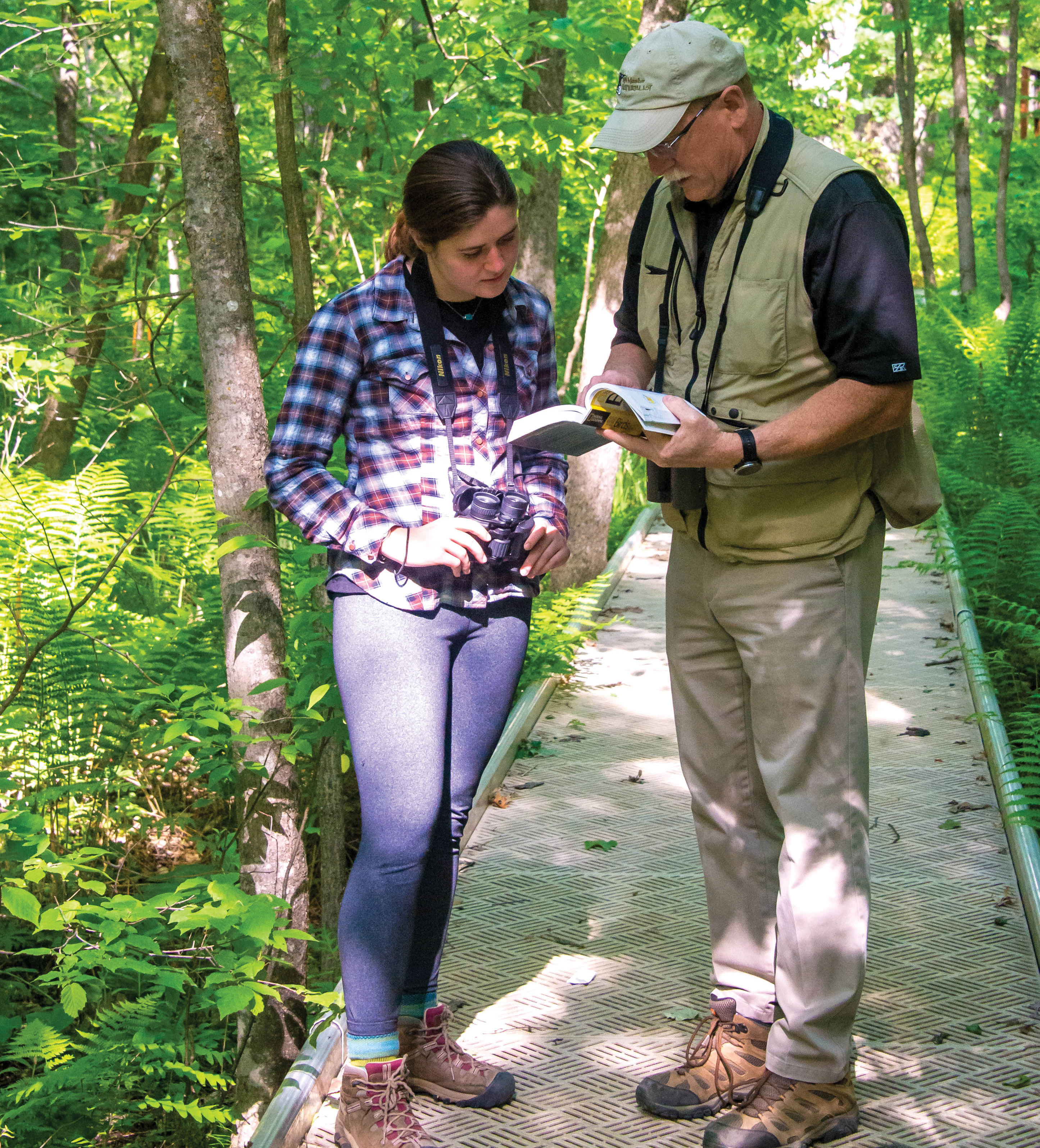
Hannah Keller
Keller convinced her boss that the Big Woods, Big Rivers course would help her in her job as a waste educator for Dakota County. She finds younger people want to see the effects recycling has on the environment. “I like that the class is so physical, out in nature. It’s a great way to learn and gets me out from behind a desk,” she says.
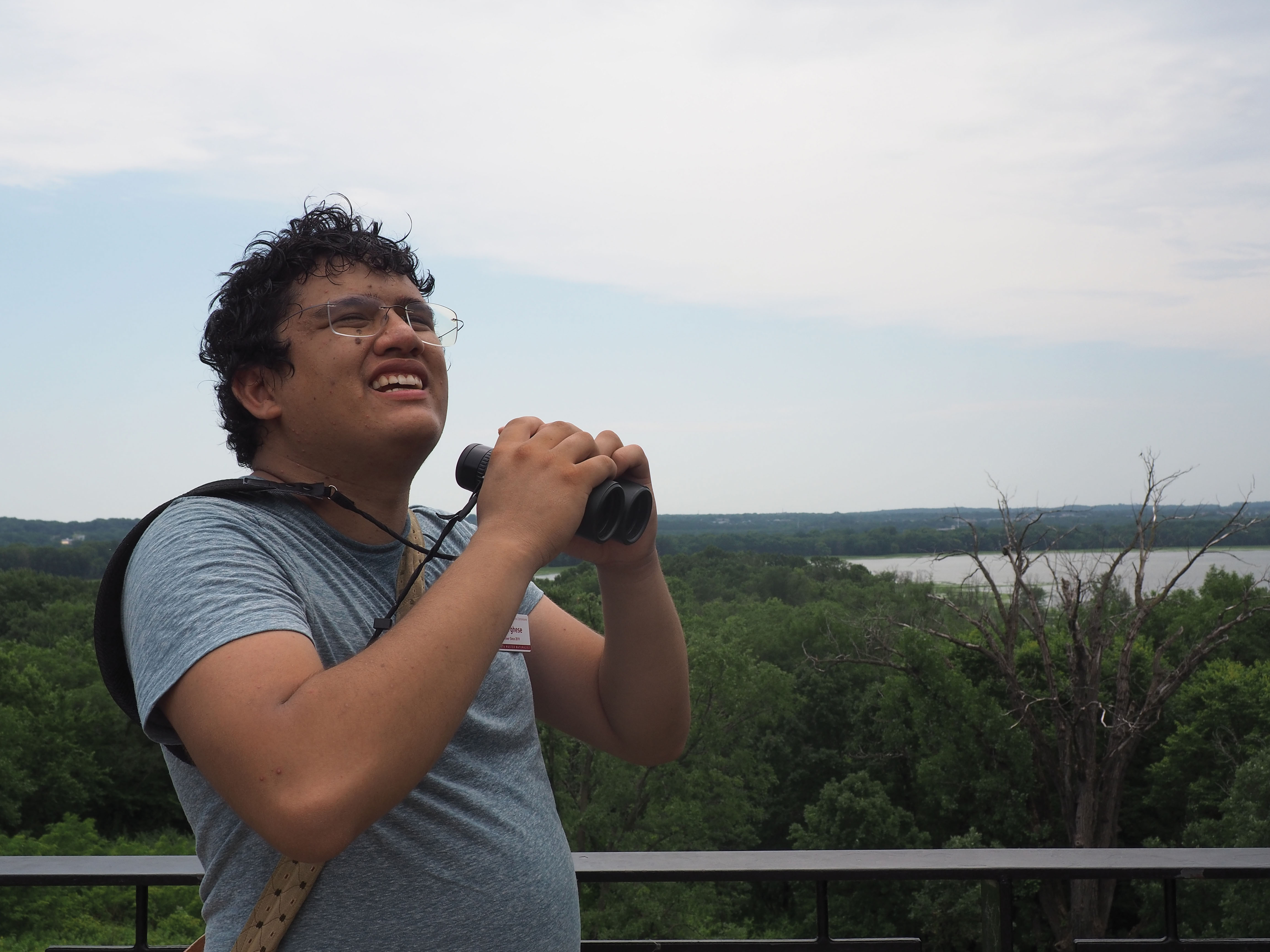
Ise Varghese Mac
Mac likes birds, but don’t call him a birdwatcher. “So much of what we do in birding is with our ears,” he says. The graduate of the U’s College of Biological Sciences especially likes Icelandic gulls. He volunteers at the Minnesota Valley National Wildlife Refuge in Bloomington and is considering careers in refuge management.
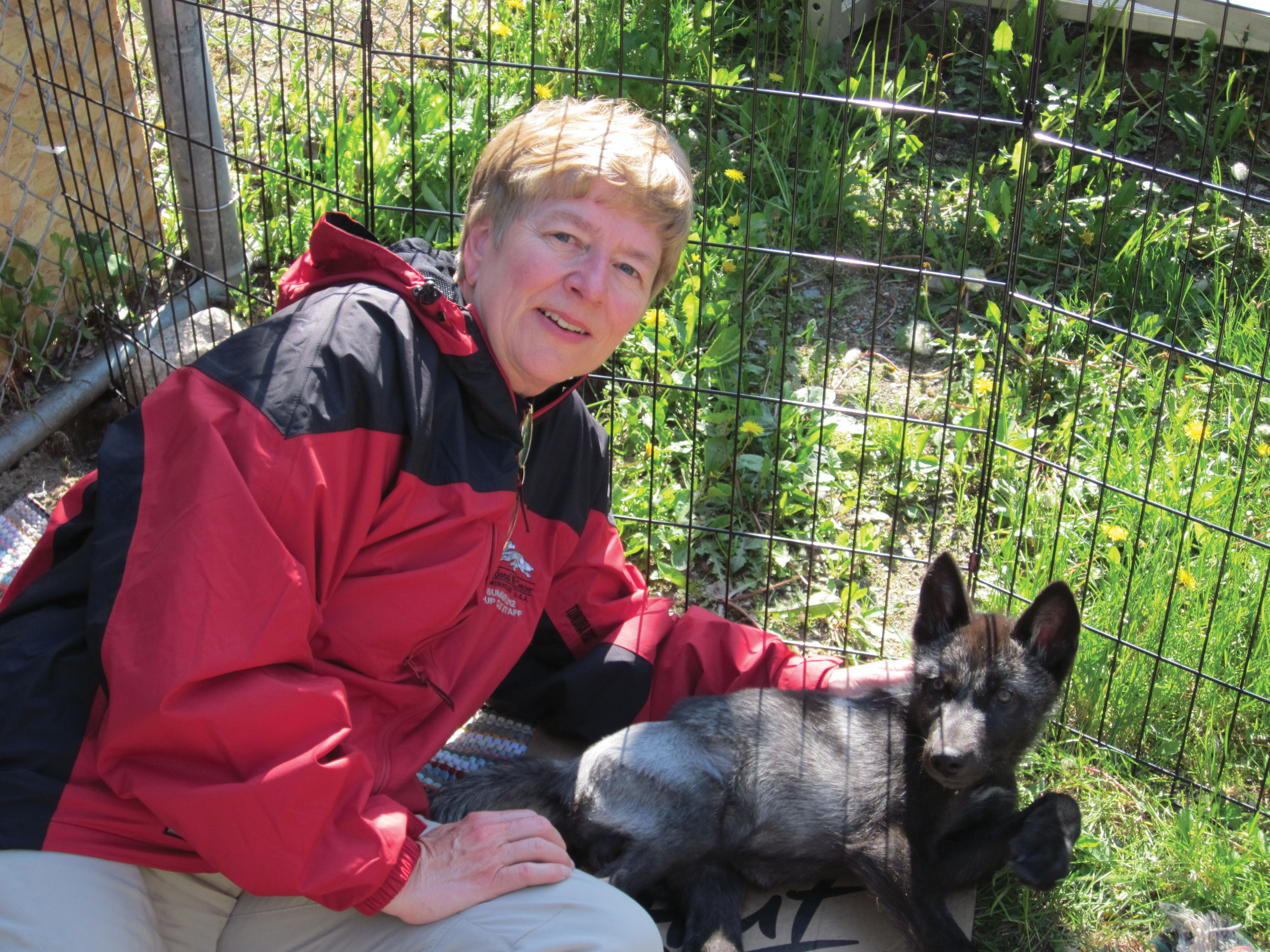
Debra Lewis
A volunteer with the International Wolf Center in Ely, Lewis is a caregiver for new wolf pups. “I have a great sense of pride that I am a part of this wonderful program,” she says. “It is a huge learning experience.”


